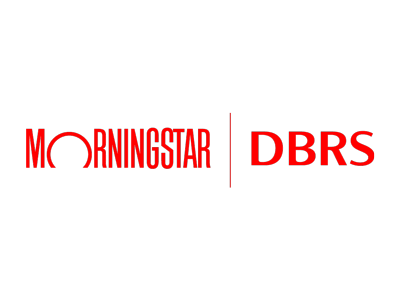Economists have their favorite indices to measure the health of the economy. GDP, if men are buying underwear, CPI, RV shipments, GDP, plastic surgery appointments, PCE, hemlines… tomorrow on The Mortgage Collaborative’s Rundown Skylar Olsen, the Chief Economist of Zillow, will discuss some of this, and more, for 30-45 minutes starting at noon PT, 3PM ET, in “The Rundown”. Meanwhile, lenders are shifting the focus from things they can’t change to things they can: changing regional managers comp plans to incorporate profits instead of volume. Or honing marketing systems now, not when rates drop further and opening up refi opportunities. Or shifting to paying less for a refi and putting the difference into rate sheet pricing. And who’s buying the properties we’re lending on? Women. Okay, that was a bold generalization, but still… (Today’s Commentary podcast can be found here and this week’s is sponsored by Vesta, the new, modern Loan Origination System (LOS) which helps lenders reduce their costs to originate and improve their ability to integrate with new technologies in the ecosystem. Hear an interview with Ally Home’s Glenn Brunker on what’s happening in the housing market and what to expect going into spring homebuying season.)
Lender and Broker Software, Products, and Services
Matic, a digital home insurance platform built for the mortgage industry, recently announced an exclusive partnership with PRMG to extend their marketplace of over 40 A-Rated carriers into PRMG customer offerings. PRMG joins over 100 mortgage lenders, servicers and banks, representing 20 percent of home loans processed in the U.S., that partner with Matic to integrate the insurance shopping experience into the homeownership lifecycle. Now more than ever, mortgage leaders are turning to Matic to help them offer value to customers, generate revenue, and reduce costs in a tough housing market. Mortgage leaders, don’t miss out: book a demo with Matic to discover how to add an ancillary revenue stream that removes friction from the insurance process and keeps customers within your existing systems. And if you’re attending MBA’s Servicing Solutions Conference in two weeks, stop by booth 806 to learn more! Book a demo with Matic.
Only 60 days since launch and already 150+ mortgage originators have signed up to receive daily mandatory bids from MAXEX on bulk pools of Agency-eligible non-owner occupied (NOO) and second home loans. Moreover, we’re currently winning more than 10 percent of the loans bid! Why? Because our unique loan exchange model provides access to competitive pricing from five leading institutional buyers, allows you to underwrite to agency guidelines, and helps you avoid costly Agency LLPAs—all within a single contract and through a single, standardized clearinghouse. This seamlessly integrates with your existing bulk trading process. Visit here to learn more.
We live in a world of autopay, Apple Pay, Venmo, Uber Eats… the list goes on. If borrowers can pay for a pizza online, why are we still asking them to share their credit card info over the phone? Get with the times and collect upfront fees via text with Fee Chaser by LenderLogix.
TPO Products for Broker and Correspondent
“Button Finance is a leading home equity lender specializing in HELOCs and Closed-End Seconds, offering lucrative opportunities for our partners. Correspondent partners can earn 7.85 percent of the loan balance, while brokers can make 5 percent. Additionally, we offer an attractive 3.5 percent Lender Paid Compensation on Texas 50a6 loans. Our services extend to lending against investment properties for brokers, ensuring a broad spectrum of lending solutions. With competitive 8 percent note rates on Closed-End Seconds and no appraisals up to a $250k loan balance, Button Finance is your go-to partner for all home equity lending needs. Email us for more information.”
Eighty percent of homeowners have first mortgage rates less than 4 percent. However, they are sitting on over $10 trillion of tappable equity. HELOC originations provide an outstanding opportunity for lenders and their LOs. Every homeowner receives HELOC solicitations. If it’s not from YOU, then WHO? Depending on YOUR borrowers, this may be the ideal time for them to make home improvements or pay off credit card debt. Or it may be the right time for that dream vacation. NFTYDoor, a division of Homebridge, is a proprietary digital HELOC platform that provides on-demand access to YOUR borrower’s equity. Customers want an experience that is simple and fast, and through NFTYDoor, HELOCs can close in a few days, not weeks or months. Embrace the “Customer for Life” strategy with NFTYDoor’s platform that is 100 percent branded to you. Stay in front of your customers and recapture future business. Contact NFTYDoor today.
STRATMOR and Operations
Forecasters are predicting modest growth in new and existing home sales in 2024, which means we can all look ahead with cautious optimism. Now’s the time to review your operations and prepare for this modest shift back toward normalcy. Senior Operations Executives: STRATMOR Group is hosting its virtual Operations Workshop next week, February 14-16, to help you do just that. Interact with STRATMOR advisors and your peer lenders to discuss improving operational efficiency, overcoming recent challenges and pain points, and current trends in mortgage operations. Contact STRATMOR Group to learn more and sign up.
Conventional Conforming News
The Federal Housing Finance Agency’s 2024 scorecard for the government-sponsored enterprises included a new provision for representations and warranties. “Explore opportunities to harmonize the enterprises’ processes supporting the single-family selling representations and warranties framework, including defect identification, remedies and repurchase alternatives,” the scorecard states.
Fannie Mae’s (FNMA/OTCQB) December 2023 Monthly Summary is now available and contains information about Fannie Mae’s monthly and year-to-date activities for our gross mortgage portfolio, mortgage-backed securities and other guarantees, interest rate risk measures, and serious delinquency rates. There’s also Fannie’s Home Purchase Sentiment Index® (HPSI) which increased to its highest level since March 2022, due primarily to increased consumer confidence in job security and another significant jump in the share of consumers expecting mortgage rates to decrease. An all-time survey-high 36 percent of respondents indicated that they expect mortgage rates to go down in the next 12 months, while 28 percent expect them to go up, and 35 percent expect rates to remain the same. (Seems pretty even to me.)
Fannie Mae is updating the Uniform Loan Delivery Dataset (ULDD) to provide further guidance on implementation and mandate dates associated with the data enhancements included in the ULDD Phase 5 specification published on Sept. 12, 2023. Review the announcement for an overview on the implementation and mandate dates associated with business-critical and UAD 3.6 alignment data enhancements for the Phase 5 data requirements.
Pennymac is aligning with Freddie Mac Bulletin 2023-19, announcing updates to their rental income requirements. The updates are effective with loan deliveries on or after 03/15/2024. Details are available in Pennymac Correspondent Announcement 24-06.
National MI announced updates to the TrueGuide which include the following changes and clarifications: AUS Loans Automated Tools have been updated as follows: Fannie Mae Appraisal Waiver has been updated to reflect the name change to “Value Acceptance.” Fannie Mae Income Calculator for self-employment income has been added as an approved income and asset tool. Non-AUS Loans have been updated as follows: Jumbo and Medical Professional Program loan limit increases. Verbal Verification of Employment updated to align with the GSEs’ requirements. Underwriting Guidelines detailing these changes and clarifications will be posted to nationalmi.com in the near future.
AmeriHome Mortgage Announcement 20240111-CL summarizes previously published changes made during January, additional changes made with this announcement, and recent Agency and regulatory news.
Citizens Correspondent National Bulletin 2024-02 includes information on Value Acceptance + Property Data – DU (Delegated Transactions only). Effective February 1st, Conventional Conforming Updates and Disaster Tax Filing Relief. See the bulletin for additional information and all lock, delivery, and purchase by dates, if required.
Capital Markets
Need a crash course in Assignment of Trade (AOT) executions? In this blog post, Assignment of Trade Executions 101, MCT experts delve into the process of AOT executions, the impact of bid tape AOT on to-be-announced (TBA) positions, and how automation is moving the industry forward. The blog also reviews the cost savings associated with bid tape AOT executions and the MCT Marketplace technology used to complete these transactions. To learn more about MCT Marketplace, view the recent video with MCT’s CEO & President, Curtis Richins. In the video, Mr. Richins reviews key features of MCT Marketplace, opportunities within the platform for buyers and sellers, and a roadmap for the future.
Even with all the selling in the bond markets last Friday after January’s payrolls data came in much stronger than expected, yields have merely moved back to where they had been for most of the year so far. Most security prices are determined by supply and demand, and yesterday witnessed a strong sale of 10-year Treasuries at the record $42 billion 10-year Treasury auction.
But bonds barely budged! Sentiment was dominated by fears surrounding NY Community Bank. Do you remember when the spreads between Treasury securities and MBS “blew out” last March with the banks having to sell MBS? We may see that again with the NYCB possibly selling part or all of Flagstar’s billions in mortgage holdings. In news of interest to loan originators, FNMA’s Home Purchase Sentiment Index recorded another impressive gain for the second straight month to post the highest level since March 2022.
Today’s calendar kicked off with weekly jobless claims (218k, about as expected, 1.871 million continuing claims… the job market continues to be strong). Later are wholesale inventories and sales for December, several Treasury auctions that will be headlined by $25 billion 30-year bonds, Freddie Mac’s Primary Mortgage Market Survey, and remarks from Richmond Fed President Barkin. We begin the day with Agency MBS prices about .125-.250 worse, the 10-year yielding 4.13 after closing yesterday at 4.15 percent, and the 2-year is at 4.44.
Jobs and Transitions
“Direct nationwide lender Kwik Mortgage, based out of Parsippany NJ, is hiring Distributed Retail Sales. We have outstanding support, and our platform is built for you, featuring Blend, Encompass, HubSpot, Loan Vision and Optimal Blue! We offer a full suite of correspondent buyers inclusive of Fannie Mae and Freddie is on the table for 2024! From FHA and VA to Non-QM we have it all! We have a very flat leadership structure which means customers are not paying for more and getting less! We invest in our people and our process, and we have 27 years of company owned and operated success! We are always competitively priced. Don’t worry about fulfillment execution we owned and operated one of the best loan fulfillment for pay businesses in the country, Equilibrium Mortgage Solutions! Contact Paul Campbell, EVP of Lending, (760-774-7704), Paul Campbell, LinkedIn! We are connected: a Fannie Mae diverse minority advisory board lender, The Mortgage Collaborative lender board member, MBA Policy, Servicing and Compliance committee participant! A Depository DE&I advisory board member! Get Kwik come join us! NY, NJ, PA, CT, MA, RI originators welcome.”
Stronghill Capital, LLC, an Austin, TX-based Wholesale and Correspondent lender, is NOW HIRING across the country! If you’re a relationship-focused Account Executive with experience in Non-QM and Investor Financing, including multi-family and mixed-use properties, we’d love to speak with you! Stronghill’s Account Executives enjoy open territories, multi-channel opportunities to work with clients as correspondents or brokers, and consistent communication and collaboration with the Executive Leadership team. If you’re looking to join a rapidly-growing, dynamic organization with a focused commitment to growth and expansion in Non-QM, reach out to our SVP of Sales, Matt Brammer at 440.382.3183 to learn more.

